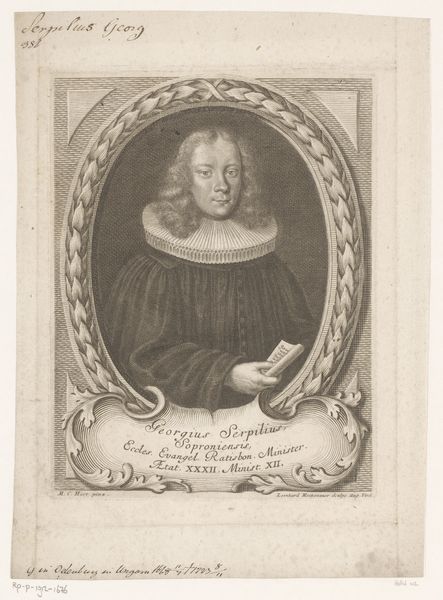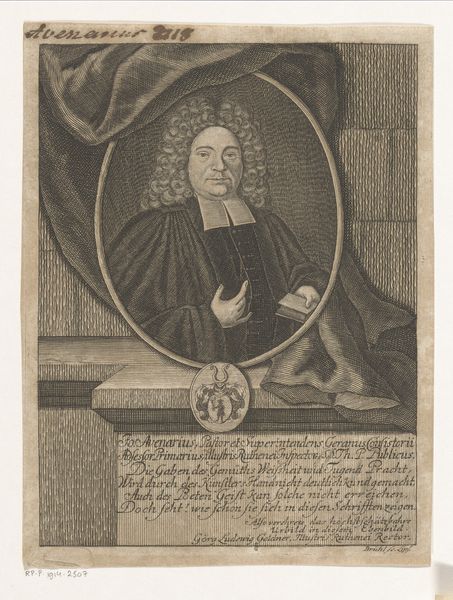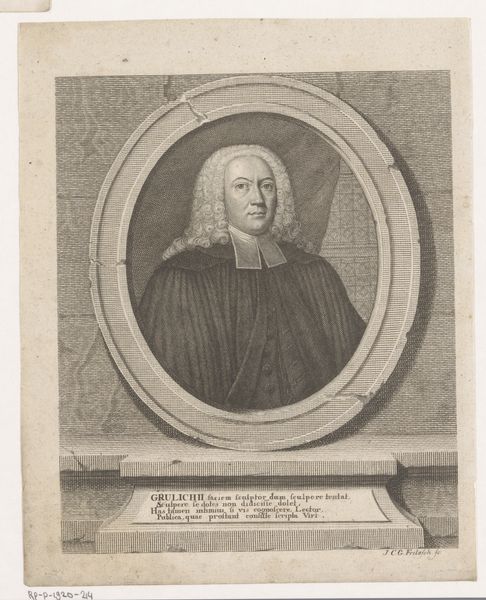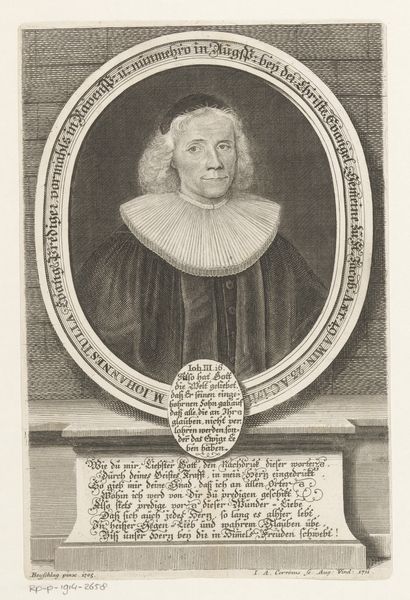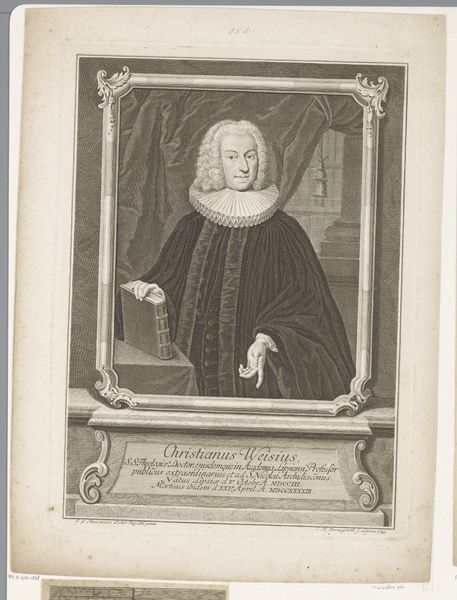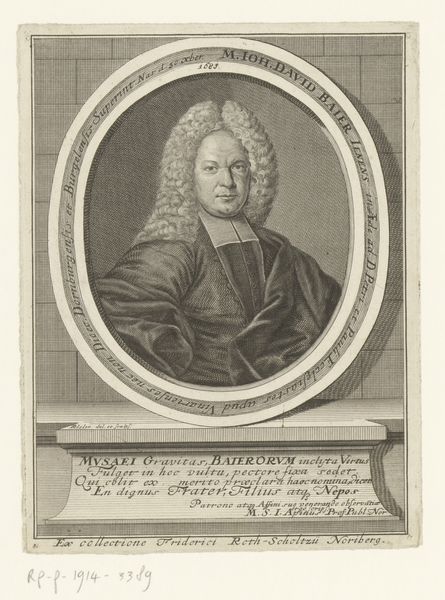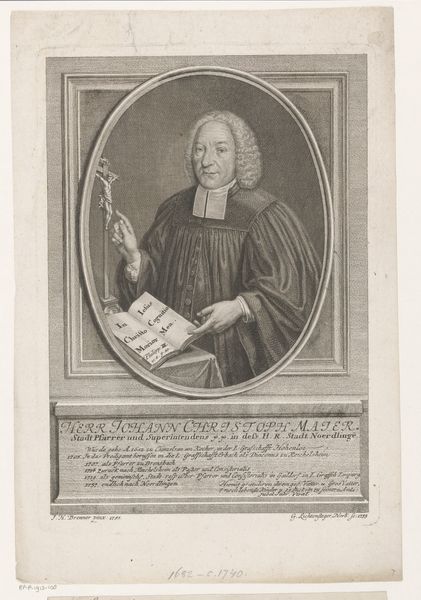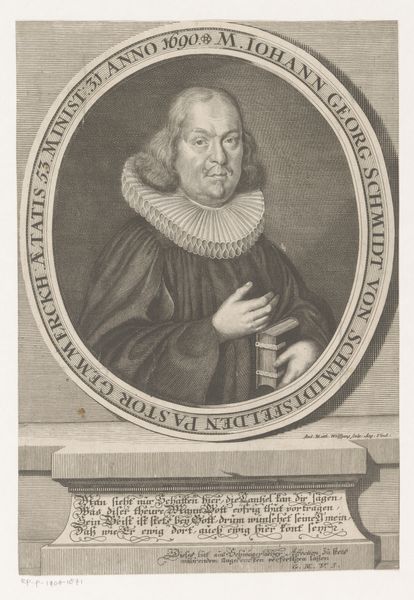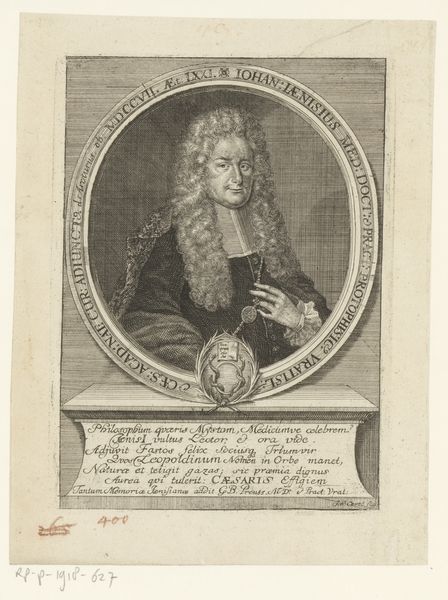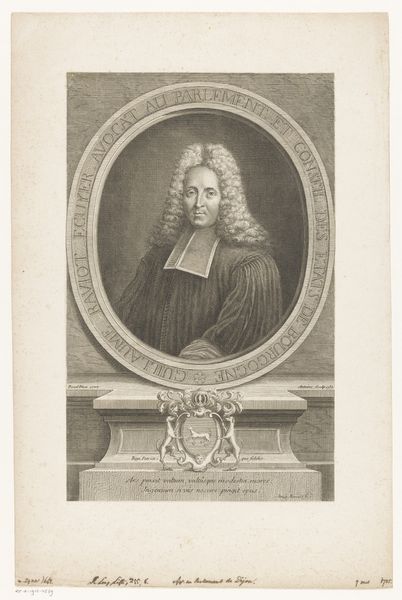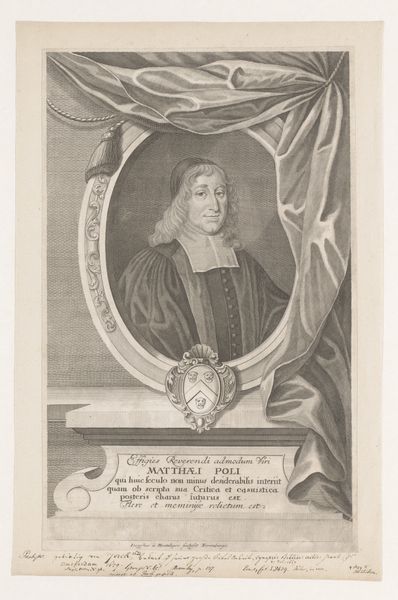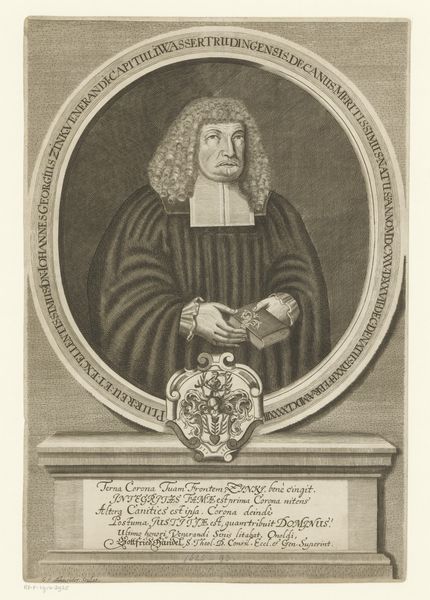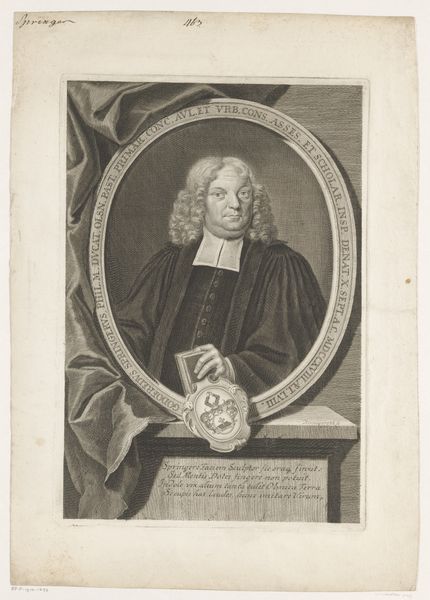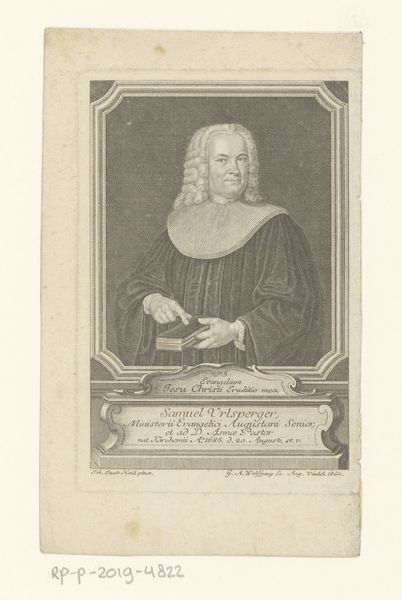
print, engraving
#
portrait
#
baroque
# print
#
history-painting
#
academic-art
#
engraving
Dimensions: height 199 mm, width 155 mm
Copyright: Rijks Museum: Open Domain
Curator: Welcome. We’re now viewing “Portret van Justus Gottlieb Pfeil,” an engraving by Johann Martin Bernigeroth. This work, likely created between 1748 and 1767, resides in the Rijksmuseum collection. Editor: It has this...stately, almost bureaucratic feel to it. The precision of the lines, the oval frame – it feels like a carefully constructed image meant to project a specific type of authority. Curator: That’s a very keen observation. Consider the cultural context. As a print, the image served as a way of broadly disseminating Pfeil's likeness, embedding his memory in the social consciousness of his community. The Baroque style, so prevalent during that time, uses elaborate ornamentation to amplify a sense of grandeur, a notion especially visible within formal portraiture. Editor: Exactly. I think about the performativity of portraiture during this era. What messages were conveyed? Bernigeroth consciously utilized portraiture to construct an image, to project a certain representation. Looking closely, his gaze, while directed forward, seems… reserved. His hand gestures with a subtle, yet calculated air. Curator: Notice how Bernigeroth captured the details of Pfeil’s clerical garments and wig, symbols of his religious authority. Pfeil was a pastor at St. Nicholas church. These details function almost as a kind of shorthand for Pfeil's social role. It’s fascinating to think about how potent visual symbols can be as carriers of meaning and tradition. Editor: The inscription reinforces that – the text functions as a dedication, practically solidifying his position within the religious hierarchy. There’s an inherent power structure on display, particularly as this portrait was probably more accessible to wealthier citizens. We can’t forget that. It all constructs Pfeil’s identity but simultaneously upholds existing class dynamics. Curator: Indeed, while portraits celebrate individuals, they equally illuminate the culture from which they emerge, exposing norms and structures, which are always worth a critical review. The symbolism is potent; the cultural dynamics are fascinating. Editor: Absolutely. And I appreciate the reminder to see portraits, particularly those seemingly straightforward, as layered with social cues. It shifts from simple memorializing to a valuable sociohistorical lens.
Comments
No comments
Be the first to comment and join the conversation on the ultimate creative platform.
